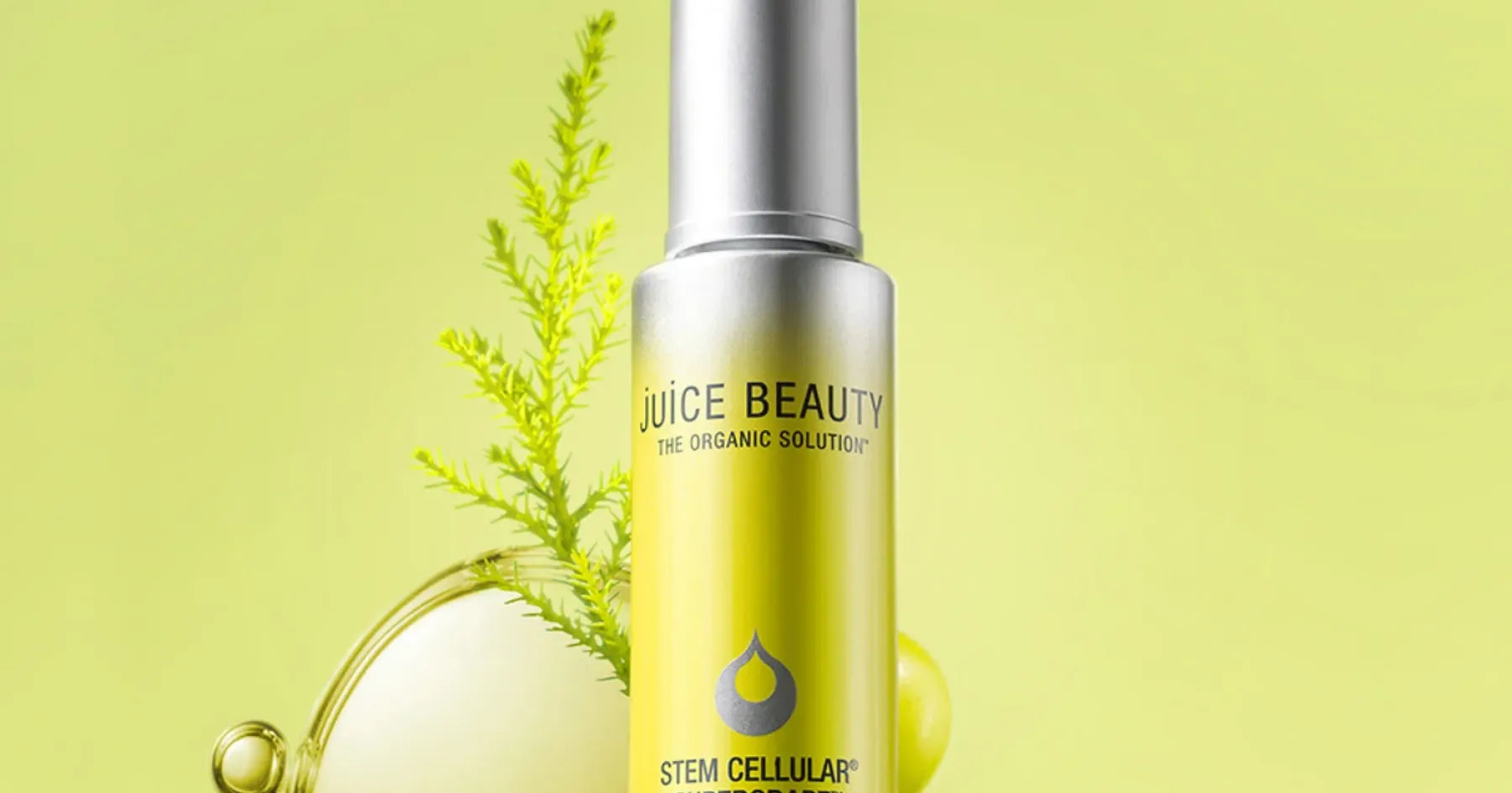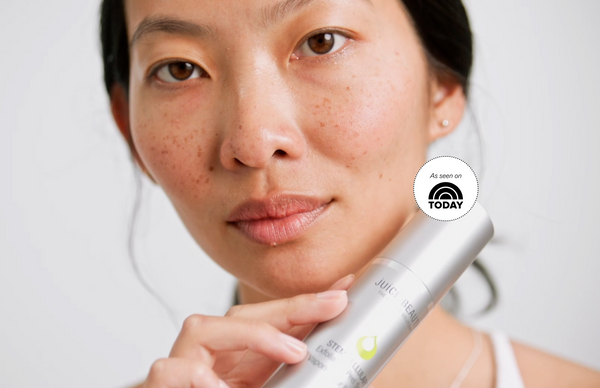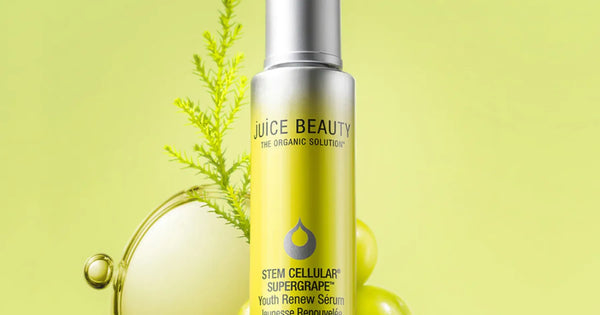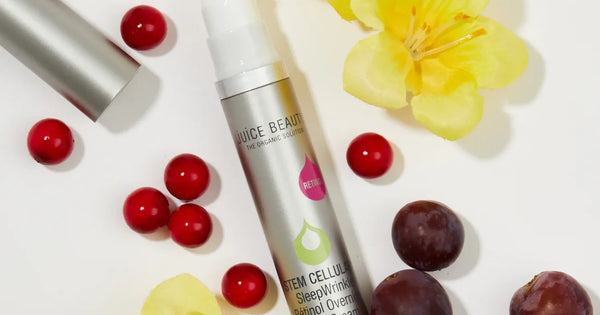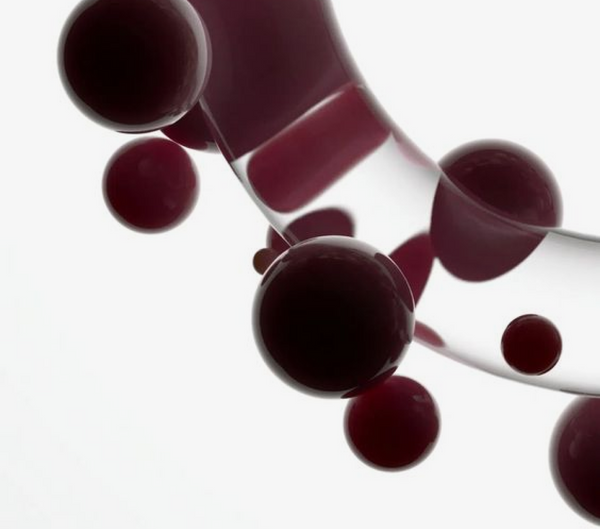If you have dry or sensitive skin, then you know the struggle of finding the right products for your skin type. Unlike oily skin’s strong moisture barrier, dry skin is always fighting to lock in moisture — and this makes using the right ingredients essential.
Because dry skin struggles with oil production and retention, people with this skin type often rely on skincare to fill in the gaps. This means choosing nourishing and hydrating ingredients for your skin.
Niacinamide is one of the best skincare ingredients you can use for your dry skin. Today, we’ll break down the reasons why and show you exactly how you can introduce this hydrating active ingredient into your skincare routine.
What To Know About Skincare for Dry Skin
Here at Juice Beauty, we believe in the power of skincare ingredients. The right active can mean the difference between red, irritated skin and a smooth, soothed complexion.
There’s a reason why we keep the juice in and throw the junk out. Especially when it comes to dry skin types, the ingredients you use matter.
Ingredients To Avoid
If you have dry skin, then using anything that is overly harsh on your skin can cause some serious irritation. This skin type should avoid potent acids and rough skincare formulas that, despite the promoted benefits, can have some serious side effects that cause more harm than good for your skin.
Some ingredients to avoid include:
Salicylic Acid
This beta-hydroxy acid (BHA) is a type of chemical exfoliant made to spear through the skin and root out any impurities. While this ingredient works wonders for breakouts on acne-prone skin, such harsh tactics can affect the natural sebum production that your skin relies on, severely damaging dry skin types.
Too Much Retinol
Retinol is the premiere anti-aging skincare ingredient, used to manage common signs of aging like fine lines, hyperpigmentation/dark spots, and other skin conditions. However, people with dry skin need to be more careful with this powerful active ingredient. Too much retinol can cause increased dryness, red skin, and skin irritation, so dry skin types should opt for retinol serums with lower concentrations of the potent acid.
Harsh Exfoliants
Skincare formulas made to exfoliate can be potentially irritating for people with dry skin. Both physical and chemical exfoliators alike are designed to remove layers of the epidermis, which can rub dry skin types raw. If you have dry skin, look for more gentle cleansers to clarify your skin.
Ingredients To Use
Using harsh skincare ingredients on your dry skin can leave cracks in an already fragile skin barrier. Instead, opt for gentle and nourishing ones. Dry skin types need protective active ingredients that will support the skin — and its natural barrier.
Some ingredients to use include:
Hyaluronic Acid
Abbreviated as “HA,” this acid is a slippery molecule naturally produced in your body. It’s classified as a humectant, meaning it sucks in and holds onto water. HA is often included in skincare products for its extraordinary hydrating abilities.
Our STEM CELLULAR SuperGrape Youth Renew Serum with Hyaluronic Acid is made with HA to nourish the skin’s surface and promote a plump, smooth complexion. In studies, 100% of participants reported a more youthful skin appearance, 100% reported their skin improved daily, and 96% reported their skin's bounce improved.
Glycerin
Glycerin, also called glycerol or glycerine, is a type of sugar alcohol common in skincare products. It’s also a humectant, giving it these same hydrating effects. Glycerin is a popular moisturizing agent because of its ability to draw water to the surface of the skin.
Our STEM CELLULAR Anti-Wrinkle Ceramide Overnight Cream is made with glycerin to provide intense hydration that works to smooth wrinkles and restore your skin as you sleep.
After five weeks, 91% of participants in our clinical trial reported an improvement in overnight skin moisturizing replenishment, 91% reported enhancement of softness and suppleness, and 89% reported that their skin felt refreshed and renewed in the morning.
Malic Acid
This alpha-hydroxy acid is a naturally occurring molecule found in many fruits and wines. In food, it contributes to that tarte taste you associate with apples. In skincare, malic acid works to boost moisture and slow water loss in the skin.
At Juice Beauty, malic acid is a key ingredient in our products. We start each product with our exclusive Bio70+ technology, which ensures that every formula has a base of at least 70% organic ingredients — this creates an antioxidant-rich environment for our active ingredients to perform at their best. Our Green Apple Brightening Essence is made with malic acid to nourish your skin and prepare you for the rest of your skincare routine.
What Is Niacinamide?
There’s one more ingredient that you should use on your dry skin: niacinamide.
Niacinamide is a form of vitamin B that supports your health in many ways. There are eight water-soluble B vitamins in all, and niacinamide comes from one of them — vitamin B3, or niacin.
Your body relies on niacinamide to support joint flexibility, help with digestion, and convert food into energy. However, it has a very different role in your skin. When it comes to skin health, niacinamide is above all else a hydrator.
Why Is Niacinamide Good for Dry Skin?
The hydration power of niacinamide leads to many benefits for your skin. Every skin type has something to gain, but dry skin especially can be transformed when using niacinamide products.
Strengthens Skin Barrier
The surface of your skin is made up of a lot more than just skin cells. It also includes oils, proteins, pigments, and, most importantly, lipids.
Lipids are fatty acids that form the cell membranes across your body. They’re thicker than water-based molecules, which allows them to control what enters and exits your cells. For individual skin cells, this helps protect your genetic information, but for your skin as a whole, it keeps the entire organ safe.
Lipids are the primary component in your skin’s natural barrier — so the more lipids in your skin, the stronger your skin barrier. However, dry skin types often don’t produce enough of these strengthening fats, leading to weakened skin barrier function.
Thankfully, niacinamide can help with that.
Niacinamide increases enzyme activity responsible for producing more of these skin-strengthening lipids within your skin, which means that this skincare ingredient has the power to significantly strengthen your natural skin barrier.
Locks in Moisture
Strengthening your skin’s natural barrier creates a chain reaction of benefits for your skin, one of which is increased moisture retention in the skin.
Your skin naturally goes through a process called transepidermal water loss in which water sneaks through the cracks in your skin barrier and evaporates into the air. A little bit of water loss is perfectly normal, but dry skin types often lose more water than they can regenerate, leading to symptoms like redness, cracked skin, or flaking.
This is where niacinamide comes in. Remember how the skincare ingredient can increase skin barrier-strengthening lipids? Well, one of these lipids is directly responsible for holding onto water in the skin: ceramides.
Ceramides are waxy molecules in the skin that hold your skin cells tightly together, making it difficult for water to slip through the cracks. This protects against water loss in the skin and locks in the moisture your dry skin needs to look and feel its best.
Hydrates Your Skin
The other benefit of strengthening your skin barrier is that niacinamide instantly hydrates your skin.
Without any drying pollutants sneaking into your skin, and without all that unnecessary water leaking from the moisture barrier, your skin can be its fullest and most hydrated self — and it’s all thanks to niacinamide.
3 Tips for Using Niacinamide on Dry Skin
Before you start using niacinamide serum on your skin, it’s important to prepare your skin for the new product. Dry skin types are particularly sensitive, which means they can sometimes have negative reactions to even the best skincare products if introduced too quickly.
Before adding niacinamide to your skincare routine, think about how you can best set your skin up for success.
1. Start With a Patch Test
Before you apply niacinamide to your face, do a small patch test somewhere else on your body to see how your skin reacts to the product. It doesn’t have to be much, just a drop is plenty. After rubbing the niacinamide serum into clean, dry skin, watch the area over the next few days to see if a negative reaction develops.
2. Introduce Niacinamide Gradually
When using a new skincare product, you always want to start out small. Even with a patch test, sometimes your skin will take time to acclimate to a new product, so you want to introduce it slowly to minimize any reactions your skin might have.
Begin with your niacinamide serum only once a week, then bump it up to every few days as your skin gets used to the product. When you feel ready, you can start using niacinamide every day.
3. Choose a Serum With At Least 5% Niacinamide
Different niacinamide serums will have varying concentrations of the active ingredient. Although niacinamide is safe for dry skin, it can still be a lot for this sensitive skin type to take in. That’s why people with dry skin should opt for serums with lower concentrations of niacinamide.
If you have dry skin, begin with a 5% niacinamide formulation. You can always bump it up to 10% or lower it down to 2% depending on how your skin reacts — and if you have more questions, don’t be afraid to ask your dermatologist.
Achieve Healthy Skin With Niacinamide
Scientists have studied the skin extensively and know how different skin types react to different ingredients. In other words, they know what’s juice and what’s junk.
Niacinamide is one of the most powerful actives out there, making it a popular ingredient in skincare products made for dry skin.
So whether your skin is always a little chapped or you’re preparing for the extra dryness this coming winter, introducing a niacinamide serum can help you keep hydration at the center of your skincare routine.
Sources:
Retinol: Cream, Serum, What It Is, Benefits, How To Use | Cleveland Clinic
